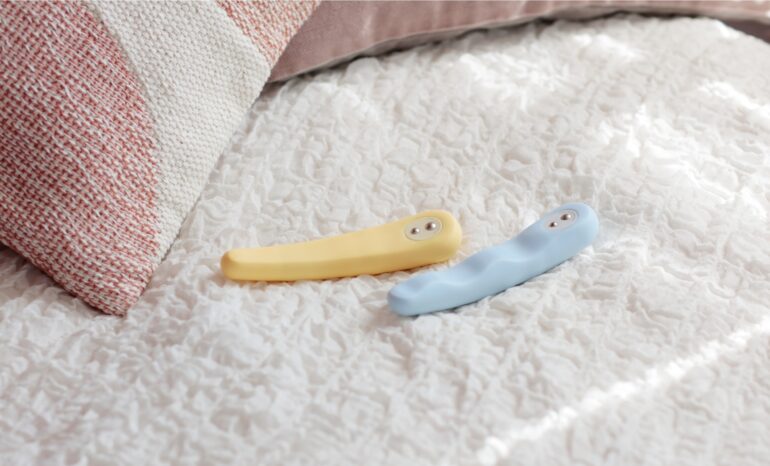When couples decide to explore intimacy together, it’s rarely just physical. It’s about emotional openness, mutual discovery, and shared vulnerability. That process can feel thrilling, awkward, healing and sometimes all at once. But the right tools can help create space for trust, pleasure, and joy.
This guide offers a candid look at must-have items for couples exploring together, whether starting fresh, reigniting a connection, or simply growing more in tune with each other.
Key Highlights
- Emotional safety and sensual exploration go hand in hand.
- Simple tools—when thoughtfully chosen—can build stronger, more playful intimacy.
- Communication-enhancing items are just as important as those designed for pleasure.
- Comfort, consent, and curiosity are more important than complexity.
Creating Comfort and Safety First

Before anything physical, there’s the question of how safe and emotionally available both people feel. A strong foundation of comfort allows exploration without performance anxiety.
Essential starting points:
- Soft lighting options: Think dimmable lamps or LED candles—gentle lighting can instantly ease tension and shift focus from perfection to presence.
- Clean, inviting space: Investing in nice bedding, body-safe oils, and even scent diffusers creates an environment where touch is welcome and expected to feel good.
- Non-verbal communication tools: Items like Yes/No/Maybe lists or card decks with intimacy prompts encourage honest conversation, especially when words feel clumsy.
Trust doesn’t just happen. It’s built with every tiny moment of care—and the space we create for each other.
Tools for Emotional Intimacy
Exploring together isn’t only about physical closeness. Often, what couples crave is deeper emotional resonance.
Here are a few tools that can gently guide couples into more meaningful connection:
- Conversation card decks focused on relationships or desires
These go beyond “What’s your love language?” and help couples talk about fear, fantasy, or even childhood stories that shape their emotional wiring. - Shared journaling apps or physical notebooks
Writing letters to each other—especially about vulnerable moments or small appreciations—can increase emotional intimacy when spoken words feel limited. - Meditation or mindfulness recordings designed for couples
Even 10-minute guided body scans can help couples drop into presence together, softening nervousness and building awareness.
Exploration isn’t always about trying something new. Sometimes, it’s just paying more attention to what’s already there.
Pleasure Products That Prioritize Connection

Pleasure can be playful, slow, loud, or quiet—but ideally, it’s shared in a way that reflects each partner’s boundaries and joy. For couples just beginning to explore or reframe their intimate connection, simplicity and quality matter more than intensity.
A curated space like ShopErotic can be a great place to begin. Instead of overwhelming visitors with endless options, it offers intimacy products selected for comfort, elegance, and real-world practicality. Whether you’re exploring toys for couples, sensual massage tools, or body-safe lubricants, the focus is on trust-building and shared curiosity—not performance.
Beginner-friendly items that encourage exploration:
- Couples massagers: Focus on shared touch and sensuality over goal-driven stimulation.
- Body-safe lubricants: A non-negotiable for comfort and pleasure, especially when trying anything new.
- Blindfolds or soft restraints: For those curious about trust and anticipation, these introduce a new dynamic without harshness.
- Sensual massage candles: They melt into warm oils and offer both scent and touch—an easy, low-pressure invitation to connect.
For many couples, these are not “spice things up” gimmicks, they’re tools for slowing down and tuning in.
Building Trust Through Shared Exploration

Exploring together should never feel like one partner dragging the other into something unfamiliar. Consent isn’t a formality; it’s the ongoing process of checking in, respecting boundaries, and staying open to feedback.
That’s where these items help:
- Yes/No/Maybe checklists
These printed or digital tools allow partners to explore interests individually first, then compare – offering a neutral space for honest communication. - Aftercare kits
Whether or not play involves kink or high emotion, aftercare matters. This could include soft blankets, favorite snacks, affirming words, or simply water and space. Having a post-intimacy ritual brings security and closure. - Sensory experimentation sets
Some couples use curated sets that introduce varied textures: feathers, silk ties, warming gels – as a way to learn about each other’s sensory preferences.
None of this needs to be dramatic. In fact, the gentler the approach, the deeper the impact tends to be.
Erotic Exploration Without Shame

We’re culturally more open about sex than ever—but for many couples, especially those who’ve been together a while, unlearning shame takes real work.
That’s why exploration often starts with reframing how we talk about pleasure.
- Books on sensuality and embodied desire: Titles like Come As You Are by Emily Nagoski offer science-backed insights into arousal and help dismantle myths around how desire “should” work.
- Workshops (in-person or virtual): From tantric touch to non-penetrative intimacy practices, these sessions help couples broaden their understanding of connection.
- Audio erotica apps: For partners who feel shy about initiating or naming fantasies, audio stories create a shared playground for imagination without pressure.
Erotic play doesn’t need to be explicit to be meaningful. Sometimes, it just needs to be honest.
When Physical Touch Isn’t the Focus
Not every phase of a relationship is defined by physical intimacy. Illness, stress, trauma, or life transitions can all reshape the rhythm of closeness.
During these times, connection tools might include:
- Weighted blankets or shared sensory items
Physical comfort through pressure or warmth can ground the nervous system—helping both partners feel safer and closer. - Connection rituals
Holding hands for 60 seconds without talking. Saying one thing you appreciated about the other before sleep. These moments might feel small but are deeply regulating. - Sleep and relaxation tools for two
Think sound machines, calming scents, or cozy wearable blankets—items that say “I’m here, with you,” without requiring conversation or action.
Exploration, in these seasons, means learning new ways to love. Not less love—just different expressions of it.
What Exploring Together Really Means
Couples exploring intimacy together aren’t chasing novelty. They’re choosing to remain curious—with each other, about each other. The right items support that effort. They don’t dictate it.
The best tools are the ones that invite slowness, laughter, experimentation, and reflection. They remind couples that connection isn’t about performance. It’s about presence.
And presence? That’s the most intimate thing of all.

